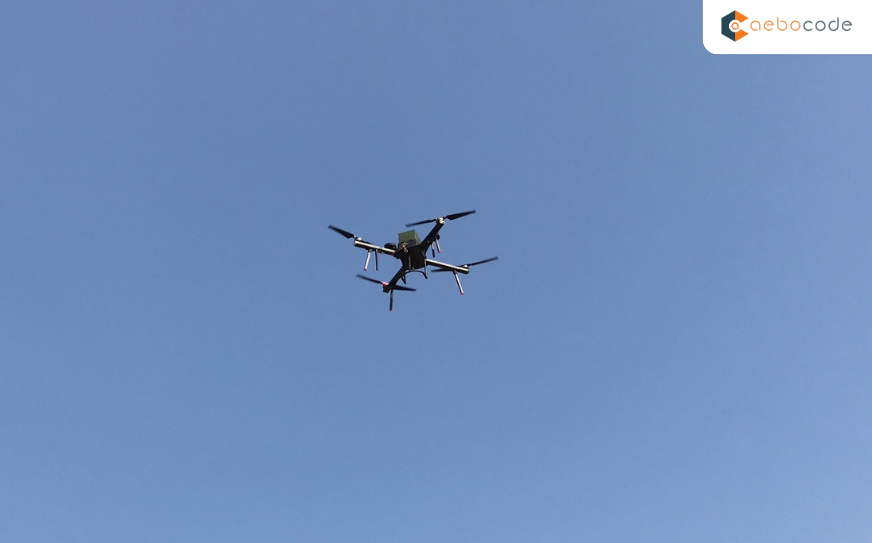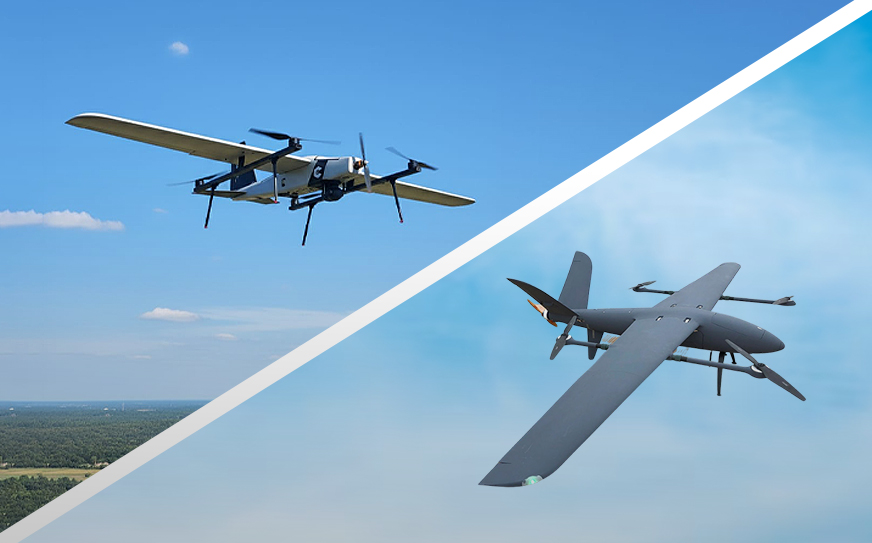
Top Drone Applications in India in 2025: Advancing Technology in Surveillance, Delivery, and Mapping
May 23, 2025
Swarm Drones: Technology, Tactics, and Future Threats
May 30, 2025Kids Drone Kits: What’s Inside the Box & How It Operates
With this technology era, it’s both fun and learning to expose children to the fascinating world of drones. Kids’ drone kits offer young minds a hands-on way to explore technology, encouraging creativity, learning, and real-world tech interaction. These kits provide all essentials for kids to build and fly drones, combining exciting hands-on learning with fun and creativity. This article covers key features of kids’ drone kits, their working, and why they’re ideal educational tools for children.
What are Kid’s Drone Kits?
Kids’ drone kits come partially assembled, allowing children to build and fly their own drones. These beginner-friendly kits include all necessary materials and instructions. They actively develop problem-solving, creativity, and engineering skills while offering a fun, hands-on learning experience. While adult drones are complex and powerful, kids’ drone kits are simplified to ensure safety, accessibility, and ease of use.
These kits typically contain elements like motors, propellers, controllers, batteries, and frames, and instructions that lead children to assemble them. As STEM gains emphasis, kids’ drone kits actively spark curiosity and introduce children to technology, engineering, and scientific thinking.
Also read : FPV Drone Kits
Components of Children’s Drone Kits
An average kid’s drone kit would have a set of pieces that are not difficult to put together to complete and operate the drone. A few of the most usual pieces that come with most of the drone kits include the following:
Drone Frame
The frame is the skeleton of the drone and provides support and shape to the propellers, motors, and other components. Manufacturers usually make the frame from light but rigid materials such as plastic or carbon fiber to keep the drone sturdy yet manageable.
Motors
Motors power the drone propellers to lift the drone off the ground. Most children’s drone sets use brush or brushless motors based on the set’s complexity and design. Manufacturers design these motors simply to ensure children can easily fit the parts together without confusion.
Propellers
The propellers are the ones that produce the lift to help keep the drone airborne. Children’s drone kits usually come with a set of plastic propellers that are light in weight and simple to attach to the motors of the drone.
Battery
Power is taken from the battery to the drone in a way that it can move. Most kids’ drone kits use replaceable rechargeable batteries, allowing users to easily swap them anytime they want. Batteries of children’s kits are safe and durable and give kids hours of fun and education without having to recharge.
Controller
Controller is the way by which kids can control the motion of the drone. It typically consists of simple joysticks to manage speed, direction, and altitude. Some of the advanced sets are even the ones that plug directly into cell phones, where kids can control the drone through a cell phone app.
Landing Gear
Landing gear is an important component that helps protect the drone from damage when landing and taking off. It also helps stabilize the drone during not flying periods. Landing gear, in children’s drones, typically is constructed with protective elements, providing extra stability.
Sensors and Cameras (Optional)
There are a few high-quality kid-friendly drone kits that include minimal sensors or cameras allowing children to record aerial video or hover over objects. These are additional capabilities enhancing education, and children are now able to learn the world differently and basic photography and video use.
Also read : FPV Kamikaze Drones
How Do Kid-Friendly Drone Kits Function?
Kids’ drone kits are made so that they can be used by children easily. Once assembled, kids can operate the drone using the included remote or an application. Let us discuss how these kits work:
Assembly Process
The initial step that kids undertake while using a kids’ drone kit is assembling the drone. There are kits that have very simple instructions, taking the kids step by step in the case of assembly. Instructions will generally have the child put on the frame, install the motors, and attach on the propellers and battery. This gives children an opportunity to be able to work on using their fine motor and problem-solving abilities in figuring out how all of the different parts fit together.
Charging the Battery
Before flying the drone, the battery needs to be charged. The kit usually includes a USB charging cable that allows children to charge the battery from a wall outlet or computer. Charging times will vary, but most child-friendly drone kits take about 30-60 minutes to fully charge.
Controlling the Drone
After the drone is completely assembled and powered up, children can have a maiden flight! Most children’s drone kits have an onboard remote controller that allows children to fly the drone. The remote usually has up and down (altitude), left and right (direction), and sometimes speed in more advanced kits. In even advanced kits, children can even pilot the drone with their smartphones using a special app.
Flying the Drone
After the drone is in the air, children can control its direction and play with the airspace. Drone flying involves coordination and gives children the exciting experience of understanding physics principles of flight. Most drone packages also include simple modes of flight, such as altitude hold, and one-touch takeoff and landing, making it very easy to fly for children.
Learning Opportunities
With the thrill of flying, child drone kits also have educational advantages. Through the operation of their drones, children can study in aerodynamics, engineering, and basic programming (in some of the more expensive kits). Hands-on learning simplifies technology easier to recall as STEM principles so children can learn technology by hand.
Also read : VTOL Drone
Advantages of Kid Drone Kits
Encourages STEM Learning
One of the main benefits of drone kits for children is that they enable STEM learning (Science, Technology, Engineering, and Math). As children work on assembling and flying drones, they get to learn about fundamentals of flight, electronics, and robotics. Hands-on learning also goes a long way in cultivating critical thinking, problem-solving, and teamwork skills.
Boosts Imagination
Drones are not merely flight but a chance to get creative. Kids can experiment flying in different modes, capture aerial footage or images, and even paint or sticker their drones. It provides room for imagination and helps kids express in different ways.
Enhances Coordination and Focus
Drone flying improves hand-eye coordination, focus, and motor skills, boosting life skills and enhancing academic and co-curricular performance.
Builds Confidence
Successfully building and flying a drone can make a child confident. By learning new things and solving problems, they feel successful, which makes them want to do new things.
Safe and Fun
Children’s drone kits are designed with extra caution so that safety is of utmost importance. They employ durable materials that can handle minor crashes and even feature safety elements like propeller guards and slow-speed modes to prevent harm. This provides children with the liberty to fly without any concern.
Conclusion
Children’s drone kits offer a fun, interactive way to explore technology, learn engineering and aerodynamics, and enjoy hands-on learning. Children’s drone kits come pre-assembled with all the parts children require to build, put together, and fly their own drones, introducing children to the idea of drones and STEM. With the proper drone kit, kids can be made flight proficient by parents, enhance coordination, and gain valuable life skills.
Whether your kid is a tech-whiz or simply loves flying things, children drone kits offer a whole world of possibilities. At Aebocode Technologies, we inspire the future by empowering the next generation to build, innovate, and fly their own drones.






